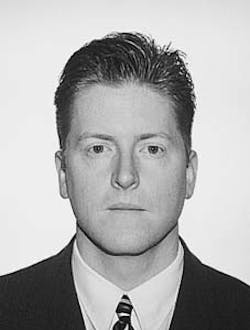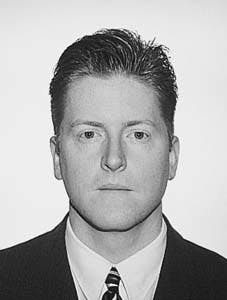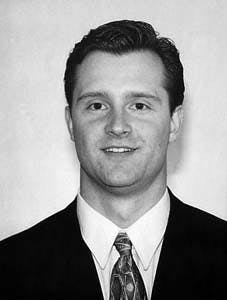Practical Drilling Technology Closed surface system allows accurate monitoring of drilling returns
Geoff WhitehouseAcquiring production data and monitoring material balance through closed surface systems enhances underbalanced drilling operations by allowing real-time interpretation of the reservoir as it is drilled.
Western Rock Bit Co. Ltd.
CalgaryPeter Stefureak
Norward Energy Services Corp.
Calgary
One of the most important aspects of an underbalanced drilling operation is to be able to measure surface returns accurately and ensure that the operation remains underbalanced.
To that end, the surface returns must be contained and carefully monitored to measure hydrocarbon production and separate all components. In a closed system, containment, separation, and measurement are all part of one process. Computers collect and analyze this information instantaneously to help the drillers maintain the proper underbalanced condition.
There are numerous reasons to drill a well underbalanced, including the following:
- The formation could be underpressured. If the zone has been producing for many years, the formation could be depleted and have a very low bottom hole pressure. Wells drilled in these zones are highly susceptible to formation damage from particle invasion if they are drilled overbalanced. Underbalanced drilling avoids filtrate invasion and reduces damage to the formation.
- The formation may have an active water drive and be susceptible to water coning. Underbalanced drilling at a low drawdown can reduce water coning effects. Because underbalance-drilled wells typically do not need stimulation treatments, there is a lesser chance of a channel being opened to the water.
- The formation may be highly fractured and have numerous lost circulation zones, making drilling expensive and complicated. The use of underbalanced drilling avoids lost circulation problems and allows fractured zones to be monitored in real time during drilling.
- The formation may be susceptible to differential sticking. If the formation pressure is less than the hydrostatic pressure of the drilling fluid column, the drillstring could become differentially stuck. Underbalanced drilling greatly reduces the chance of differential sticking because the hydrostatic pressure of the drilling fluid is typically kept above that of the formation pressure.
- The formation can be evaluated during drilling. During underbalanced drilling operations, hydrocarbons are produced to the surface when productive formations are encountered. If the information is analyzed in real-time and the well is not as productive as expected, the well's orientation can be adjusted to reach a better part of the reservoir.
Closed system
A typical closed system used for underbalanced drilling is shown in Fig. 1 [87941 bytes]. This system begins with the rotating control head on the blowout preventer (BOP) stack and encompasses all of the surface equipment, such as flow control, sampling, separation, storage, and drilling fluid pumping (Fig. 2 [32080 bytes]). The key components of the closed system are the flow line off the rotating BOP, the choke manifold and sample collection system, the four-phase separator, flare line and flare stack, production storage, drilling fluid storage, and pumps.
The drilling manifold is the central work area. In addition to the well control, most of the data collection and sampling occur there. The sampling area is segregated from the rest of the work area for particular safety reasons.
The flow control equipment is designated for 2,000-psi maximum and has a wear-resistant elastomer design. The sample collection design has a pressurized bypass that forces the flow through the sample mesh until the mesh is full. Then the pressure opens the bypass and allows the flow to continue past the sampler on to the separator. Samples can be quickly and easily removed and given to the geologist on site.
The four-phase separator is designed to separate drilling solids, drilling liquids, processed liquids, and gases simply and efficiently. Various size four-phase separators are used: 150, 250, or 500 bbl. The pressure rating varies 100-285 psi.
Once separation occurs, the drilling liquids are pumped to storage tanks where final particle settling occurs; the liquids can then be pumped back downhole. Drilling solids are either stored until the end of the job or they are pumped off to storage continuously during the operation. Produced fluids are stored in pressurized storage tanks, and both produced and drilling gases are sent to the flare.
The key to this operation is that no combustible mixtures can be formed in this closed system. Furthermore, the material balance to determine hydrocarbon production can be monitored continuously.
Advantages
A closed system, using real time-technology, is the best way to measure accurately and contain all returns from the drilling operation. Gas rates and fluid production are read and measured immediately, and hydrocarbon detection is quick and accurate.
If hydrocarbons are produced to surface, the only way to ensure a noncombustible mixture is by using a closed system, which prevents oxygen from mixing with the hydrocarbons. For sour applications, a closed system is the only method to guarantee a safe operation.
With a closed system, there is no contamination of ground space. All surface fluids are stored in closed vessels or are flared. There is little reclamation necessary once the operation is complete. Many companies pay a premium for site reclamation, so any reduction in site cleanup improves profitability.
Closed system equipment does not occupy much space on location. Reentry work becomes attractive or even feasible if the space on location is limited.
Once the drilling operation is complete, the well can be flow tested with the same equipment used for the underbalanced drilling segment of the operation.
Data acquisition
The most important aspect of an underbalanced drilling operation is being able to record and monitor hydrocarbon production during drilling. Hydrocarbon production is the first indication of formation contact and a true underbalanced condition.
There are several key data points, the focuses of which are accurate gas rate calculation and continuous monitoring of liquid levels on surface (Fig. 3 [97646 bytes]). Pressures are measured all along the system, and liquid levels are measured in the separator and in the storage tanks.
This information used to be collected and processed manually, with on site personnel taking readings at timed intervals, entering data into laptop computers, and then relaying important information via radio communications. With improvements in computer technology and real-time data acquisition, data collection has become faster and allows immediate interpretation. Tracking the material balance during the operation has become more efficient and easier.
The important issues facing real-time data include the following:
- Collecting the data from a variety of different points
- Bringing data together to one central processing point
- Presenting data in a user-friendly mode during the operation.
Data collection and processing are not difficult because all the components are readily available, off-the-shelf items. Getting the information sent to a remote monitor is a little more challenging, however. It is important to have a system with enough flexibility to provide real-time measurement on laptop monitors for visual interpretation. It must be able to plot real-time information and store data in several formats for post-job analysis.
To accomplish this, a programmable logic controller (PLC), personal computer and monitor, personal laptop, appropriate software, and numerous temperature and pressure transducers and liquid level gauges are needed. Data transmission is accomplished by cable, with all the data routed into the PLC. The operator can program the PLC using the computer and modify the presentation to suit the operation.
The system is portable and can be set up within a couple of hours by one engineer or technician.
Examples
A highly fractured carbonate reservoir in northeastern British Columbia was drilled underbalanced to prevent formation damage, to prevent premature coning, and to evaluate the reservoir's gas potential during drilling to obtain the target production rate. Drilling was to cease once the production rate was reached to help prolong the life of the well.
The reservoir had 8-10% porosity and 5-50 md permeability. The bottom hole pressure was 14.8 MPa, and the well was drilled 3-4 MPa underbalanced.
During drilling, gas rates averaged 200,000 cu m/day, and the well was production tested at 650,000 cu m/day (Figs. 4 [72526 bytes] and 5 [70144 bytes]). Six months after completion, the well was still producing at 600,000 cu m/day, but the well had an open flow potential of 1 million cu m/day.
The well life was prolonged by determining the optimum horizontal length, in real time, to produce the optimum flow rate and minimize coning. The production rate surpassed that in offset overbalanced-drilled wells by more than 400,000 cu m/day.
In another well in the southeastern plains of Alberta, a horizontal well was drilled underbalanced into an unconsolidated sandstone reservoir. This oil reservoir had 24% porosity and 50 md permeability. The well was drilled underbalanced to reduce water coning, lower water cut, and prolong well life.
The bottom hole pressure was 2,500 kPa, and the well was drilled 500 kPa underbalanced. Maintaining a continuous, accurate underbalance was critical to prevent the well from producing water. During drilling, fluid rates averaged 150 cu m/day, and the well flowed at 200 cu m/day of oil during the test (Fig. 6 [71409 bytes]). The well is expected to produce 90 cu m/day with only a 25% water cut. Offset wells drilled overbalanced produce only 25 cu m/day on average.
The Authors
Geoff Whitehouse currently works as a sales engineer for Western Rock Bit Co. Ltd. in Calgary. He markets Hughes Christensen bits to the Canadian oil and gas industry. Whitehouse previously worked for Norward Energy in a sales and engineering capacity, specializing in underbalanced drilling. Prior to that position, he worked for Atlas Wireline as a cased hole field engineer. Whitehouse has a BS in petroleum engineering from the University of Alberta and an MBA from the University of Saskatchewan.
Peter Stefureak has been an engineer with Norward Energy Services for 2 years. He works in the underbalanced drilling department, and his special interest is in real time data acquisition. Previously, Stefureak spent 2 years as a junior reservoir engineer with Gulf Canada Resources Ltd. He received a BS in petroleum engineering from the University of Alberta in 1993.
Copyright 1997 Oil & Gas Journal. All Rights Reserved.


